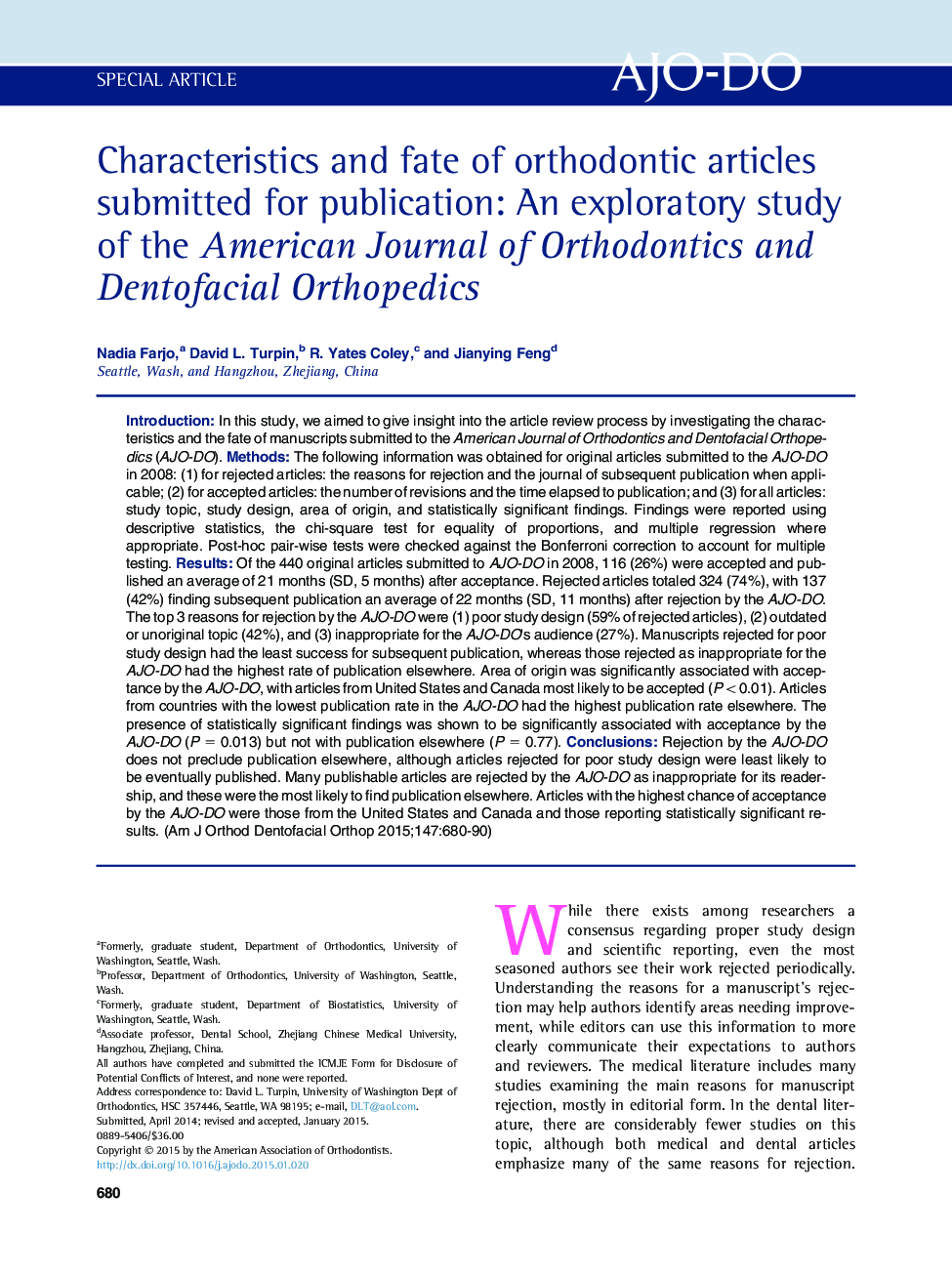| Article ID | Journal | Published Year | Pages | File Type |
|---|---|---|---|---|
| 3116011 | American Journal of Orthodontics and Dentofacial Orthopedics | 2015 | 11 Pages |
•This study explored the characteristics and dispositions of manuscripts submitted to the AJO-DO.•Articles were usually rejected for more than 1 reason.•The 3 reasons for rejection cited most often were poor study design/small sample size, similarity to articles already published, and topic inappropriate for AJO-DO audience.•Articles from the U.S. and Canada had the most publishing success in the AJO-DO.•Authors are advised to submit to an appropriate journal, use a well-designed and well-described study with adequate sample sizes, and emphasize the novelty and relevance of their work.
IntroductionIn this study, we aimed to give insight into the article review process by investigating the characteristics and the fate of manuscripts submitted to the American Journal of Orthodontics and Dentofacial Orthopedics (AJO-DO).MethodsThe following information was obtained for original articles submitted to the AJO-DO in 2008: (1) for rejected articles: the reasons for rejection and the journal of subsequent publication when applicable; (2) for accepted articles: the number of revisions and the time elapsed to publication; and (3) for all articles: study topic, study design, area of origin, and statistically significant findings. Findings were reported using descriptive statistics, the chi-square test for equality of proportions, and multiple regression where appropriate. Post-hoc pair-wise tests were checked against the Bonferroni correction to account for multiple testing.ResultsOf the 440 original articles submitted to AJO-DO in 2008, 116 (26%) were accepted and published an average of 21 months (SD, 5 months) after acceptance. Rejected articles totaled 324 (74%), with 137 (42%) finding subsequent publication an average of 22 months (SD, 11 months) after rejection by the AJO-DO. The top 3 reasons for rejection by the AJO-DO were (1) poor study design (59% of rejected articles), (2) outdated or unoriginal topic (42%), and (3) inappropriate for the AJO-DO's audience (27%). Manuscripts rejected for poor study design had the least success for subsequent publication, whereas those rejected as inappropriate for the AJO-DO had the highest rate of publication elsewhere. Area of origin was significantly associated with acceptance by the AJO-DO, with articles from United States and Canada most likely to be accepted (P < 0.01). Articles from countries with the lowest publication rate in the AJO-DO had the highest publication rate elsewhere. The presence of statistically significant findings was shown to be significantly associated with acceptance by the AJO-DO (P = 0.013) but not with publication elsewhere (P = 0.77).ConclusionsRejection by the AJO-DO does not preclude publication elsewhere, although articles rejected for poor study design were least likely to be eventually published. Many publishable articles are rejected by the AJO-DO as inappropriate for its readership, and these were the most likely to find publication elsewhere. Articles with the highest chance of acceptance by the AJO-DO were those from the United States and Canada and those reporting statistically significant results.
